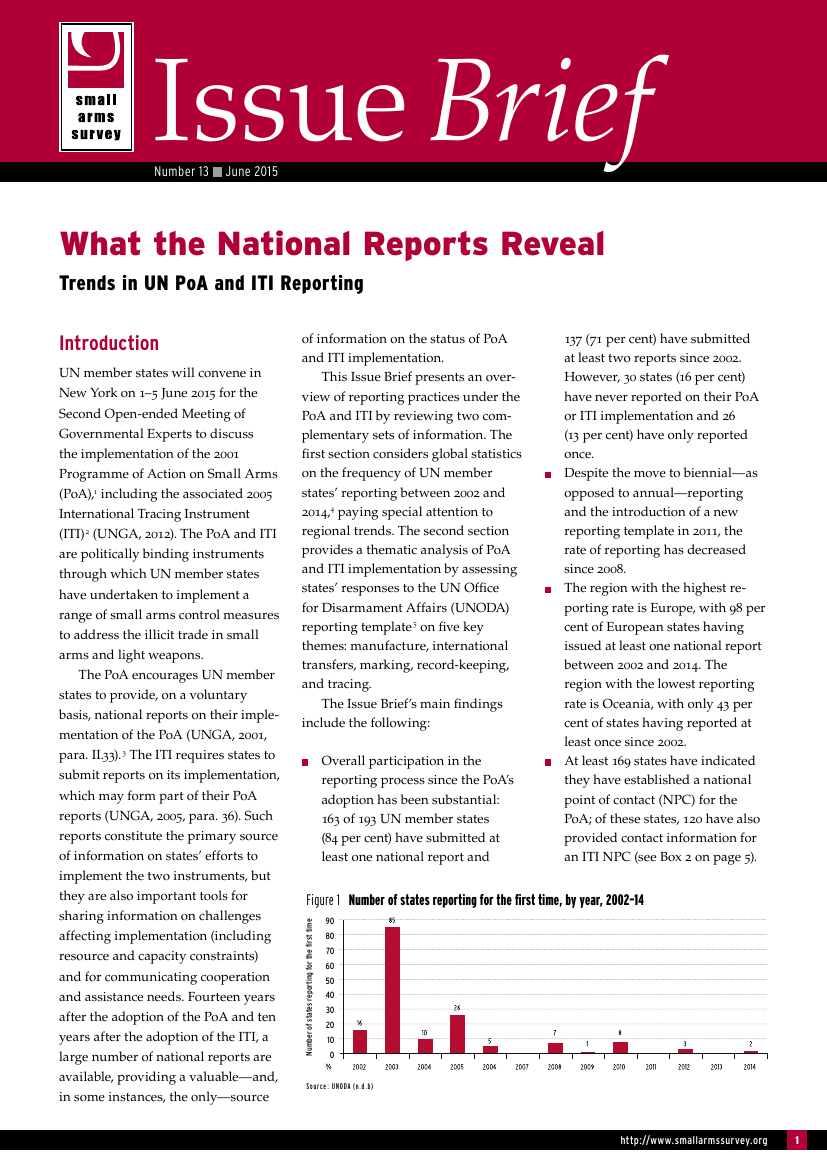
What the National Reports Reveal: Trends in UN PoA and ITI Reporting (Issue Brief 13)
The Programme of Action on Small Arms (PoA) and the International Tracing Instrument (ITI) are politically binding instruments through which UN member states undertake to implement a range of small arms control measures to address the illicit trade in small arms and light weapons, now supplemented by the Arms Trade Treaty.
The PoA urges UN member states to provide, on a voluntary basis, national reports on their implementation of the PoA. The ITI requires states to submit reports on its implementation, which may form part of their PoA reports. Such reports are important tools for sharing information on challenges affecting implementation and for communicating cooperation and assistance needs. The Second Open-ended Meeting of Governmental Experts, in the first week of June this year, brought together states parties to discuss the implementation of these instruments.
Fourteen years after the adoption of the PoA (in 2001) and ten years after the adoption of the ITI (2005), a large number of national reports are available, providing a valuable source of information on the implementation of these instruments.
A new Small Arms Survey Issue Brief, What the National Reports Reveal: Trends in UN PoA and ITI Reporting, presents an overview of reporting practices under the PoA and ITI by reviewing two complementary sets of information. It considers global statistics on the frequency of UN member states’ reporting between 2002 and 2014, and provides a thematic analysis of PoA and ITI implementation by assessing states’ responses to the UN Office for Disarmament Affairs (UNODA) reporting template which covers five key themes: manufacture, international transfers, marking, record-keeping, and tracing.
Have your say about Small Arms Survey publications and products: take 5 minutes to fill out our questionnaire.